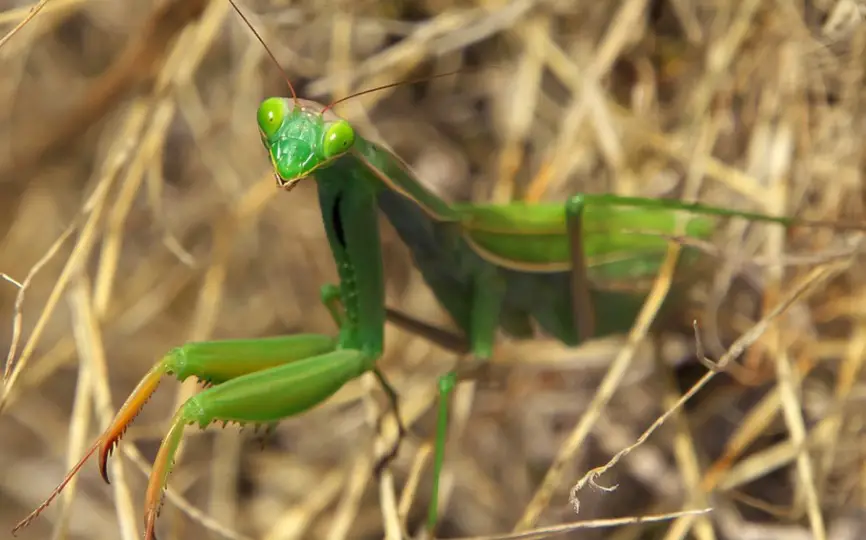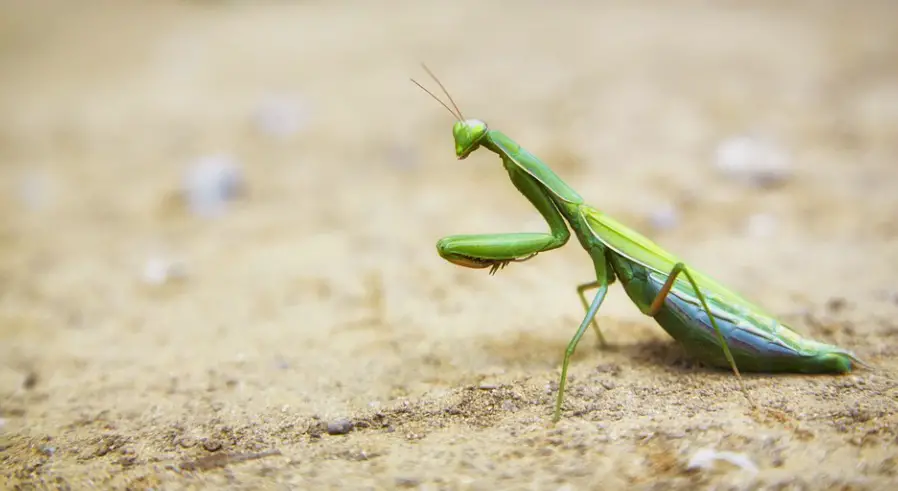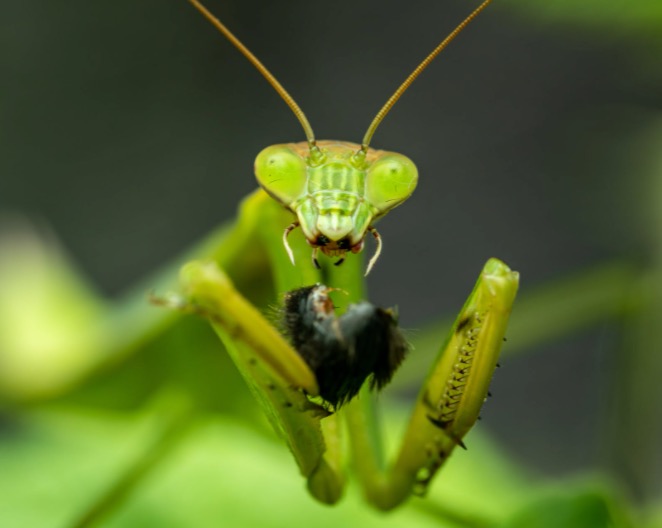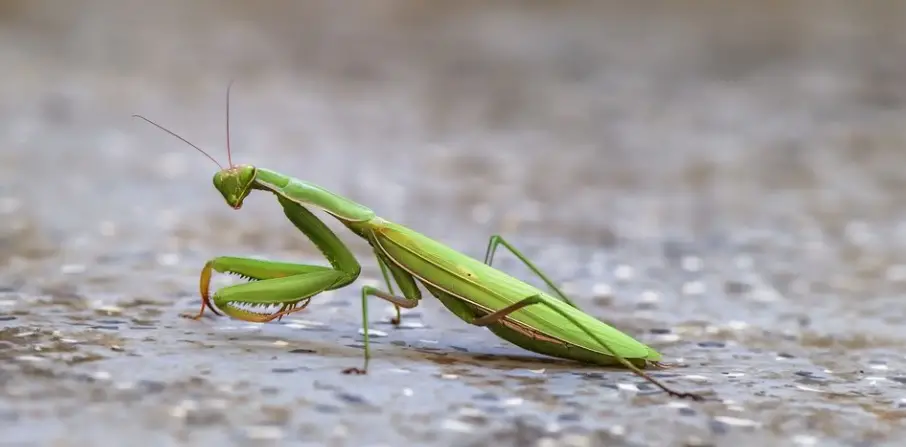Table of Contents
Praying Mantis: All You Need To Know
The praying mantis is a carnivorous insect that belongs to the kingdom of Animalia, phylum Arthropoda, and class Insecta. Its genus is Mantis and its species is Mantis religiosa. Its length is 50 to 70 mm and it weighs up to 4 to 5 g. It lives in a varied habitat; it prefers sunny areas with lots of vegetation, with a lifespan of up to 1 year in the wild.

What is Praying Mantis?
The Praying Mantis (Mantis religiosa), often known as the European Mantis, is a praying mantid species belonging to the Mantidae family. It is native to Europe, as its name indicates, but it is also found in areas of Asia and Africa.
This mantis species is found throughout portions of the United States and Canada, despite the fact that it is not native to these areas and was brought over a century ago. It was accidentally introduced to New York from Europe in 1899 and has since spread throughout the United States and Canada, reaching as far west as the Vancouver area.
Throughout its range, there are 12 subspecies that have been identified. These insects get their name from the way they stand, which mimics that of a praying person.

The order Mantodea contains around 2,400 insects. People frequently refer to these insects as praying mantis, although they are actually praying mantids, since they belong to a different genus. While the genus Mantis has 15 species, the European Mantis is the one that is most popularly recognised as the praying mantis.

The praying mantis, like all insects, has a segmented body with three parts: the head, thorax, and abdomen. Adults have wings that cover their abdomen. They have four legs in the abdominal area, as well as two bigger forelegs that resemble arms. Their huge, complex eyes are housed in a triangular-shaped skull.
A praying mantis’ head can swivel 180 degrees and pivot, providing it with a wide field of vision. They also have antennas that help them smell. The praying mantis, like all other mantids, is sexually dimorphic, with females being bigger than males.

These insects may be found in a wide range of environments, from valleys to city gardens. Warm, natural environments with tall grass and a variety of plants and bushes are preferred. These untamed regions are more likely to have enough prey for the praying mantis to eat.
Because the adults can withstand high temperatures, they are commonly found in semi-arid desert areas. The European mantis, like most mantid species, is a renowned predator that feeds on a broad variety of insects. Some of their bigger cousins have been known to eat some of the tiny reptiles, birds, and even small mammals.
These insects utilise camouflage to blend in with their surroundings, waiting until their victim is within striking distance before ambushing it. It catches its prey with its lightning-fast front legs (raptorial legs). The praying mantis strikes out with its forelegs and grabs its meal in under 50–70 milliseconds.
Their front legs feature rows of spines that assist them in holding on to their prey while devouring it head first! The praying mantis possesses strong mandibles that aid in the consumption of its prey. Because praying mantis have such a short lifespan, they only marry once, and this generally occurs in the autumn or fall months.
After the male and female have mated, the female produces an ootheca, which is an egg mass containing proteins and tanning chemicals that preserve the eggs by encasing them. Between 100 and 200 eggs will be found in this ootheca.
The larvae hatch in the spring after the eggs have developed during the winter months. The larvae will then go through several moults, the first of which will occur shortly after hatching. Due to a shortage of food and cold conditions, only a small percentage of praying mantis nymphs survive the first instar stage.
Monkeys, bats, frogs, birds, spiders, and snakes are some of the praying mantis’ predators. During the nymph stage and during mating, the praying mantis will even consume its own kind. When confronted by a predator, this insect will rise on its back legs, raising its raptorial legs over its head to appear larger than it is. It will flutter its wings as well.
Fun Facts About Praying Mantis!
The praying mantis is an amazing creature! This insect is native to Europe, Africa, and Asia, but it has already spread across the United States, and it is even the state insect of Connecticut! This insect has some extraordinary biological adaptations that enable it to live in a range of settings. It is known for eradicating pests on farms as well as its iconic prayer-like attitude.
Female Mantis Eats Her Mate
The sexual behaviour of praying mantids is well-known, and scientists have studied it extensively over the last century. The males of the European mantis initiate contact with the females. When a sexually mature male sees a sexually mature female, he takes a cautious approach.
Females are much larger than males, so there’s a chance she’ll attack and kill him if she spots him first. From behind, the male will slowly approach the female, pausing if she makes any abrupt moves. When the male is near enough to the female, he will leap onto her back and grab her by the front legs.
Copulation begins once the male has reached a stable posture. Following copulation, which can take up to five hours, the male releases the female and swiftly falls to the ground, far enough away from her to feel secure.
After, during, or in rare cases, before copulation, the male is sometimes assaulted and devoured. Sexual cannibalism is the term for this. The female partner can profit from eating her partner in the following ways:
1. It provides her with nutrition, allowing her to avoid hunting after copulation; and
2. It provides her with more resources, allowing her to produce larger eggs faster, increasing the likelihood that her progeny will survive.
While this may not appear to be very helpful to the male, males are only likely to mate once in their lives. Thus, by supplying nutrition to the female by becoming her food, the male improves the likelihood of his genetic material being passed on.
The praying mantis isn’t the only creature that engages in sexual cannibalism! The black widow spider, the jumping spider, and many kinds of scorpion are among the creatures that have been known to devour their partners.
Praying Mantis Has Only One Ear
The Praying Mantis, like other insects in the Mantidoa order, has only one ear! Even more intriguing is the fact that this solitary ear is found on the underside of its abdomen, right forward of its rear legs. The praying mantis can’t distinguish which way a sound is coming from because of the location of its ear.
The praying mantis ear, on the other hand, is capable of detecting ultrasound, which is generated by echolocating bats. This allows them to avoid any bats on the prowl. If it hears a bat approaching, the praying mantis has been observed to come to a halt and plummet to the earth in mid-flight.
Praying Mantis is a Connecticut’s State Insect
Despite the fact that the European Mantis is not endemic to Connecticut, on October 1, 1977, it was designated as the State Insect. From early May or June until the winter weather hits and they begin to die quickly, this bug may be found across the state.
This little green or brown mantis species is highly useful to farmers since it consumes aphids and small caterpillars, which may be quite damaging to crops. The praying mantis is a popular pet in addition to being a State Insect.
Praying Mantis Citations
- Protecting the Eggs of a Praying Mantis: Natural Biomaterials. Chimia (Aarau) . 2018 Nov 30;72(11):819-821.
- Prey capture in the praying mantis Tenodera aridifolia sinensis: coordination of the capture sequence and strike movements. J Exp Biol . 1990 Jan;148:147-80.
- Three-dimensional atlas of thoracic ganglia in the praying mantis, Tenodera aridifolia. J Comp Neurol . 2020 Jun 15;528(9):1599-1615.







